Dracaena leaves turn yellow: causes and solution to the problem

Dracaena is one of the most popular plants chosen for decorating an apartment or private house. On the one hand, it has an attractive appearance, and on the other hand, it does not present any particular difficulties in terms of care. Nevertheless, the owners of this plant are often faced with the fact that the leaves begin to turn yellow and even fall off. There may be several reasons for this problem.
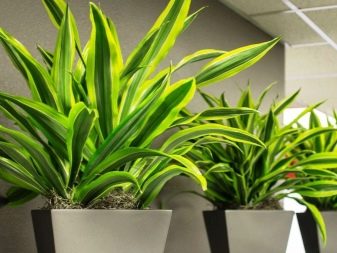
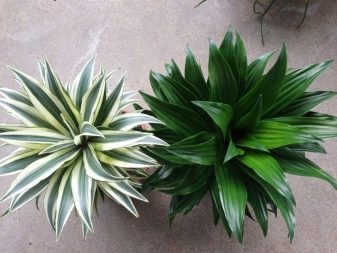
Possible reasons
Most often, in room dracaena, leaves turn yellow and fall due to improper care. However, the options for specific reasons can be very varied. Sometimes dracaena sheds the lower leaves for natural reasons. As a rule, each plate only lives for a couple of years, and then dies off by itself. This is typical only for the lower layer of leaves, therefore, if the leaves dry below, and a green, healthy crown remains at the top, there may be no problem at all.
It will be enough to remove the dead parts and do nothing else.
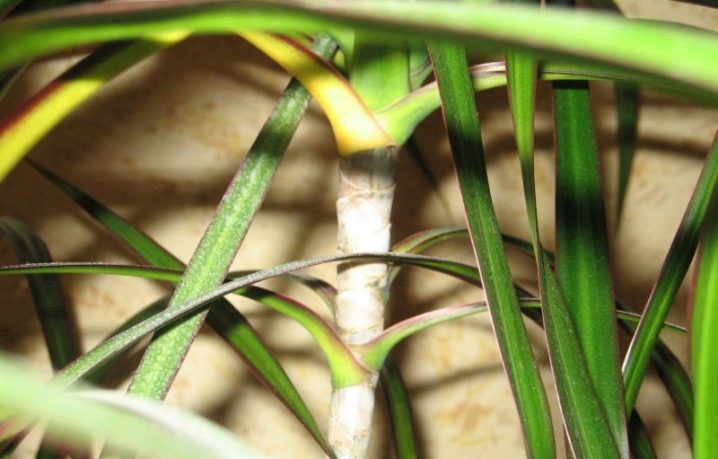
If the palm tree begins to dry out after transplanting, this indicates that the procedure was not carried out correctly.
Alternatively, the flowerpot turned out to be filled with unsuitable soil, or during the movement of the bush, the rhizome was injured.
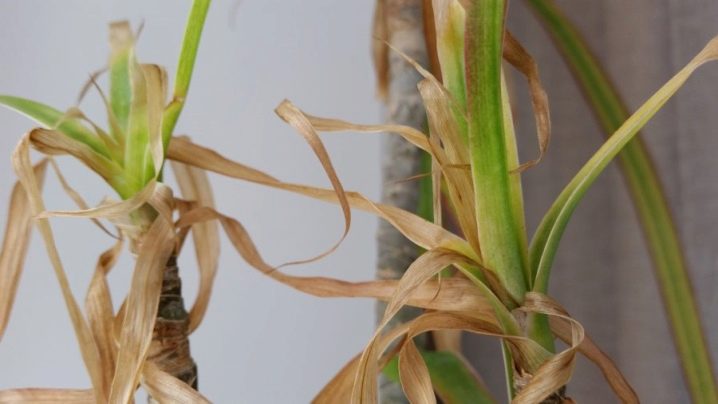
Wrong choice of location
Another likely reason is non-compliance with temperature standards, as well as humidity standards. This means that the pot is placed in an unfortunate place, which is characterized by the presence of too dry air, for example, too close to the radiator. According to the rules, this indicator should be in the range from 18 to 25 degrees. The same can be said about low temperatures and drafts.
The humidity rate in the room is also important - if this indicator is too low, then additionally dracaena should be sprayed with settled water at room temperature, and also wipe the sheets with a damp sponge.
It is worth mentioning that when washing a palm tree in the bathroom, it must be covered with plastic wrap, otherwise the moisture will be excessive.
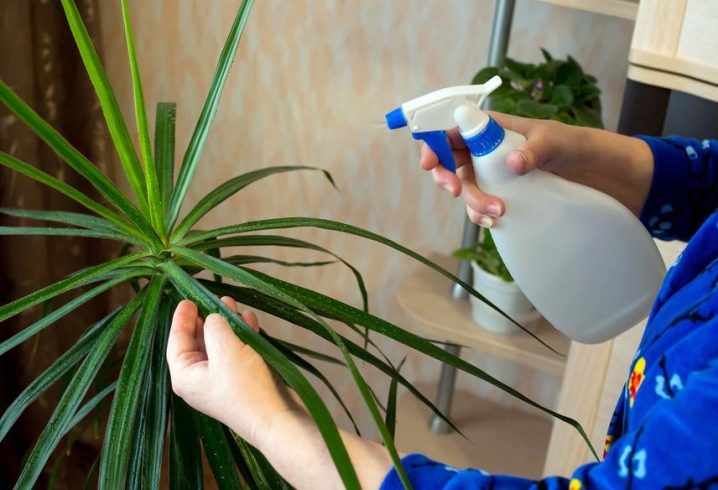
If yellowness appears on the palm in the form of spots, then they are most likely burns. As you might guess, burns appear when the plant is directly exposed to ultraviolet radiation. Experts do not prohibit taking out dracaena on the balcony in the summer, but then you will additionally have to create an artificial shade... In addition, in extreme heat, it should be removed in a cool place to avoid overheating. In addition to stains, a symptom of too bright lighting can also be pale, dry tips of the leaf.
In winter, it is important for dracaena to provide additional lighting with soft, diffused light.
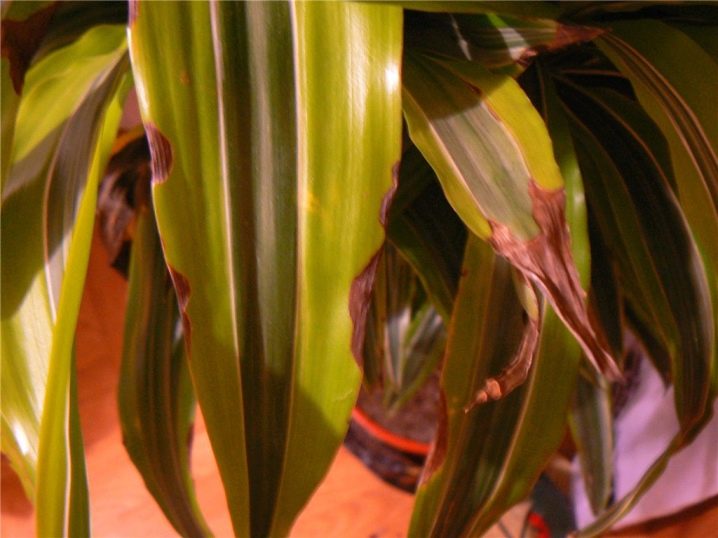
Watering mode
Descended and dried leaves often signal excessive soil moisture. If the earth does not have time to dry out, then the healthy development of a palm tree in such a situation is simply impossible.and she might even die.
In addition to dry foliage, a softened trunk is a symptom of the problem. Leaves can turn yellow even with insufficient watering - in this case, the trunk also dries.
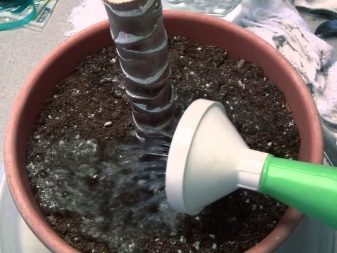
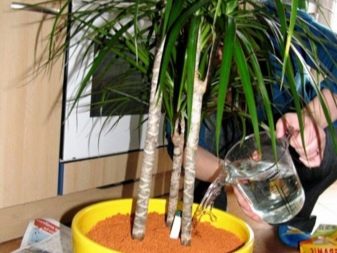
Priming
The lack of the required amount of nutrients in the soil negatively affects the condition of the dracaena. The leaves first curl up, then dry up and even fall off. In addition, the development of the plant as a whole stops. Too much mineral fertilizers are also a disadvantage.
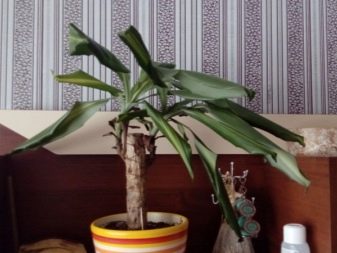

Diseases and pests
Sometimes drying is due to disease, such as a bacterial infection. However, the onset of the disease is again explained by improper care of the palm tree. For example, this happens if the room is humid, the plant is irrigated too much, but does not receive fertilizer, or the land in which the bush is planted has high alkalinity.
Yellowness is one of the side effects of decay of the root collar. Of the pests, such symptoms are caused by the scale insect, spider mite, mealy mite and thrips.

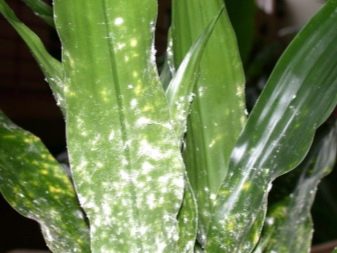
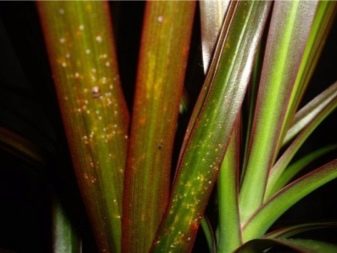
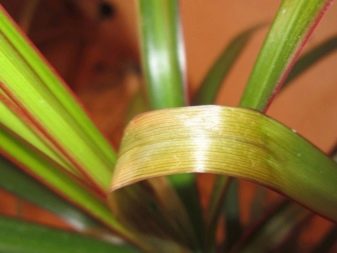
What to do?
To save the dracaena at home, it is necessary to act depending on the cause of the disease. If excessive watering is to blame, then first the plant must be removed from the pot. After assessing the condition of the root system, the decayed shoots must be removed immediately, and the rest must be dried, sprinkled with crushed activated carbon or wood ash. The plant is then transplanted into a new potting mix, which is gently compacted inside the pot.
In a situation where jaundice only worsens after transplantation, you have to use radical means - cut off the top and root it, eliminating the roots that can no longer cope.
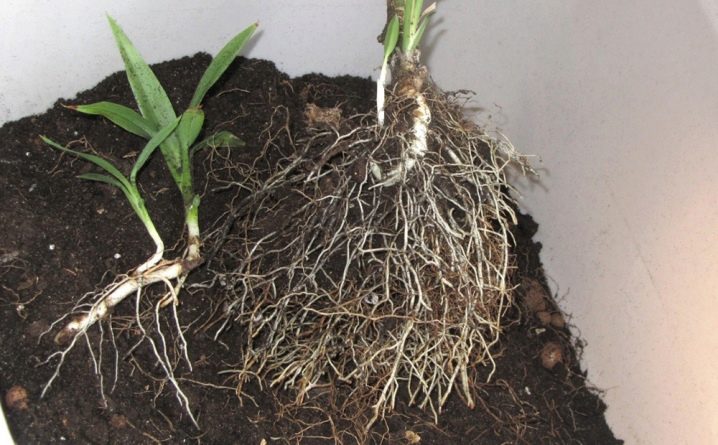
If the problem is insufficient watering, then helping the palm tree is simple - just adjust the irrigation regime.
When the cause is an excessive amount of fertilizers, you will have to renew all the land in which the dracaena lives. It is important that the new soil is lightweight and loosened regularly.... This procedure allows oxygen to be delivered to the root system and thereby improves the condition of the palm tree.
It is also recommended to transplant the plant into another vase., especially if it has been growing in the same place for a long time. The fact is that by this time a large amount of salts have formed in the ground, which create an obstacle to the "transportation" of nutrients to the roots.
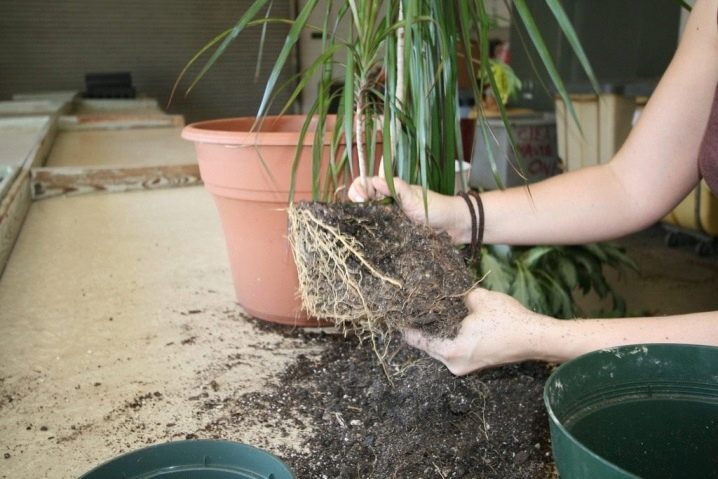
In principle, there are general rules for saving a drying dracaena. First of all, the pot is rearranged on a window sill, the window of which is covered with a cloth that allows the required amount of light to pass through. It is very important to avoid drafts during this period.... Next, the temperature is adjusted, which should be in the range from 20 to 25 degrees.
If the cause was dry air and being near the battery, regular spraying and periodic treatment with a warm shower start.
In order not to aggravate the situation with excessive moisture, after the procedure, the axils of the leaves are dried with a regular napkin or soft cloth.
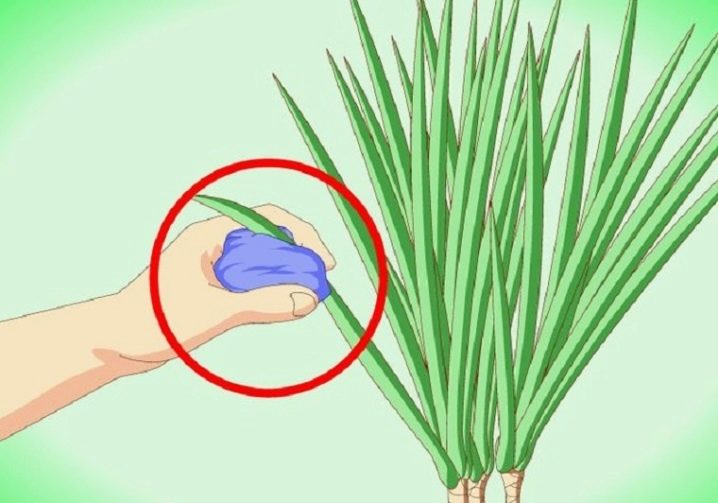
The irrigation regime is necessarily regulated, which should be carried out every two or three days, depending on the situation. In addition, a nitrogen fertilization system is being created. Top dressing should be done regularly, but not excessively.
If the burn was to blame, then the flower is simply transferred to a shady place, and a diffused lighting system is created for it. Dracaena, affected by pests, is immediately treated with a soap solution and washed with warm water. Further, it is recommended to use special purchased drugs that can effectively cope with parasites.
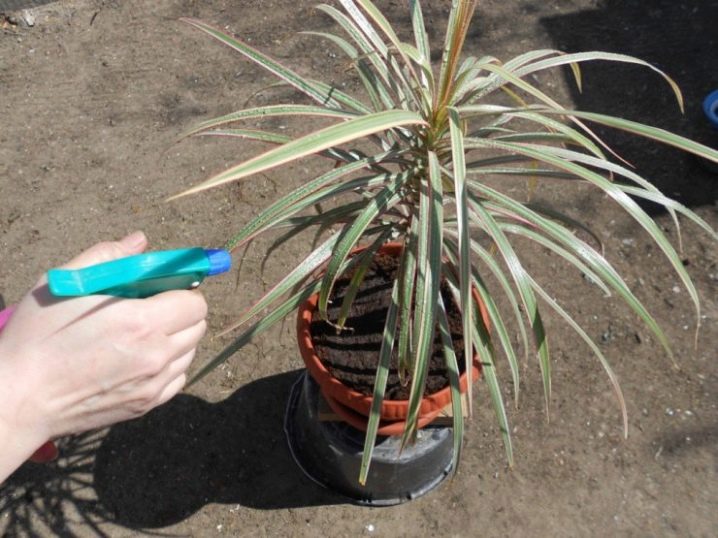
Preventive measures
The main preventive measure in a situation with yellowing and drying of dracaena can be called thoughtful care of the crop. Water the palm tree so that the soil can dry out.
Experts recommend doing this every two weeks in the winter months, and every week in the summer months. The liquid used must be settled and always at room temperature.
Watering should be done in moderation to prevent decay of the root system.

In the warm season, only the top layer of the soil should dry out completely, and in the cold season - and deeper layers. The condition of the soil can be checked with an ordinary wooden stick. Irrigation should be completed by looseninghelping oxygen to reach the root system.
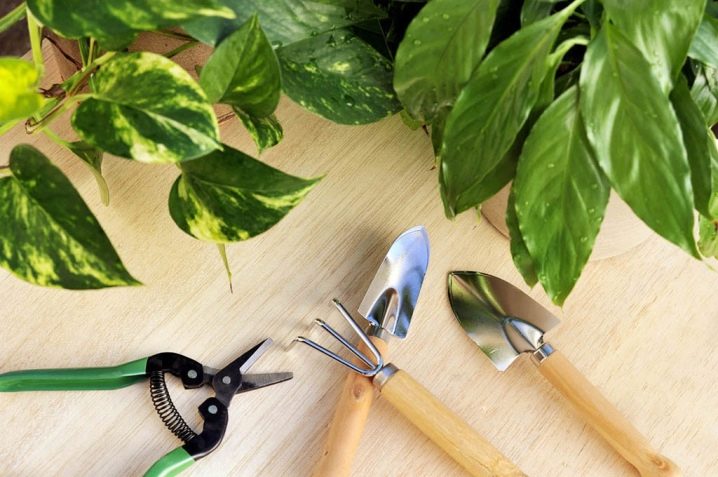
The optimum moisture content for this crop is at least 60%. To ensure a comfortable environment, the bush should be treated twice a week from a spray bottle, again with settled water. In the summer months, it would be good to additionally water it with shower water, followed by drying. Alternatively, you can install a humidifier in a room where a palm tree lives, or place a flowerpot in wet gravel.
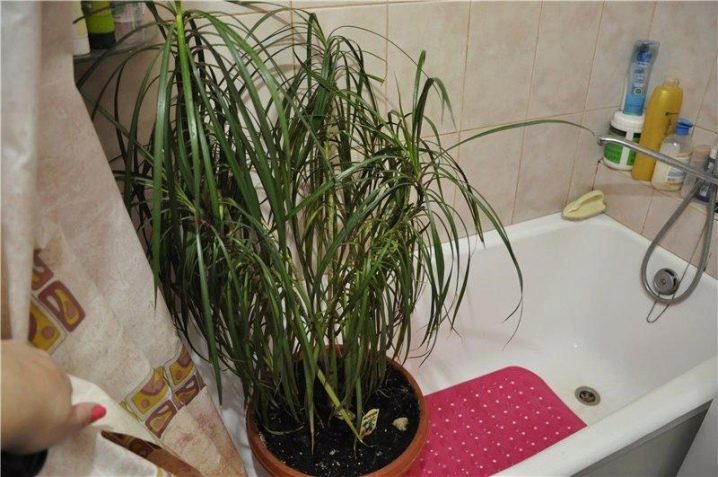
The most suitable place for the plant is protected from direct exposure to ultraviolet radiation and drafts, moderately warm and illuminated by diffused light.
In winter, it is imperative to check the condition of the window frames if the pot is on a windowsill or a glazed loggia. Frozen leaves can be saved by washing with warm water. The temperature will have to be maintained in the range of 18 to 25 degrees.

It is important to remember that when the temperature drops below 16 degrees, the soil begins to lose moisture, and the dracaena itself begins to freeze.
Of the fertilizers, nitrogenous ones are considered the most important - it is the lack of this substance that is responsible for the yellowing of the leaves. Top dressing is best applied throughout the spring and summer, be sure to follow the dosage indicated on the package. It is convenient to do this by adding the preparation to the liquid used for irrigation. Alternatively, you can use special sticks, which are simply enough to place in a pot in an upright position and generally forget about feeding for a long period.
During the winter months, fertilization is applied every four weeks, and only the soil is fertilized, and spraying stops.
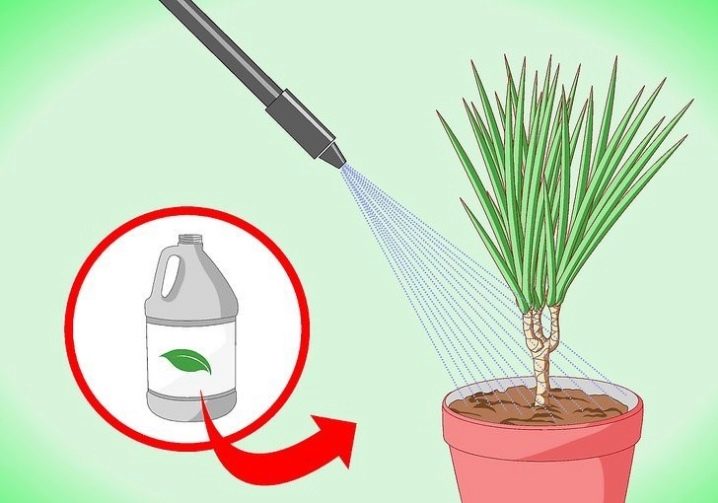
During the growth period, experts also recommend a special mixture consisting of 0.3 grams of ammonium sulfate, 0.5 grams of nitrogenous potassium and 0.4 grams of potassium phosphate. After mixing the ingredients, they should be poured with a liter of water and the resulting substance should be used to spray the bush. As a prophylaxis of diseases, potassium and phosphorus can be added to the formulations used.
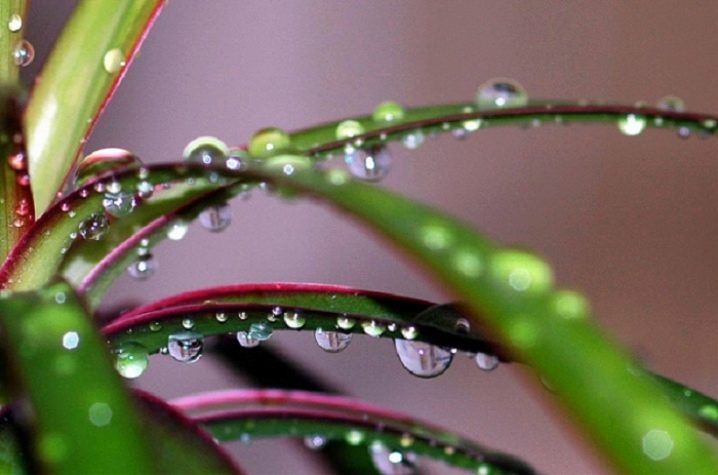
You will learn more about the reasons for the yellowing of dracaena leaves in the video below.































The comment was sent successfully.